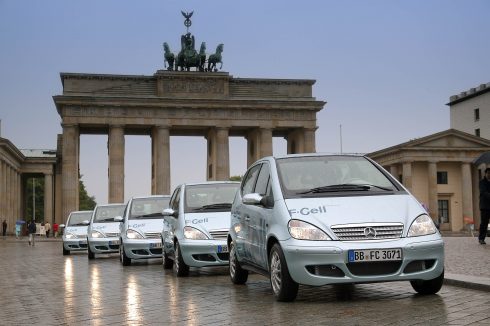The future of driving
- Gasoline
- Diesel
- Ethanol
- GTL (Gas to Liquids)
- CNG (Compressed Natural Gas)
- Hydrogen
- Electric battery
They create a super efficient vehicle that uses as little fuel as possible and has a driving range that is as big as possible. All these fuel types have their own benefits and drawbacks, and all types have potential but have to developed further to be made into reality on a large scale in the next few years. The innovations that have to be made to introduce these vehicles on a large scale on the market range from amount of refueling stations to increasing the driving range of electric battery fueled vehicles.
 “Alternative fuels are the future but in what form and shape, that is still unknown.“
“Alternative fuels are the future but in what form and shape, that is still unknown.“
Traditional fuels in a new outfit
Gasoline, diesel, ethanol, GTL and CNG are all traditional fuels in a new capacity. The motors of gasoline and diesel vehicles are designed to be more economical but still emit greenhouse gasses. Ethanol is produced from corn and other crops and produces less emissions than gasoline or diesel. GTL converts natural gasses into long chain hydrocarbons that can be used instead of gasoline or diesel. CNG can be used in place of gasoline or diesel and combusts fewer greenhouse gasses.
Electric cars
At the moment vehicles on electric batteries are in a further stage in the development process than other vehicles on alternative fuels. However the main problem with these vehicles is the range they are able to drive on a charged accu, while Tesla introduced the Model S that is able to drive 386 up to 460 km on a fully charged accu, which is equivalent to a traditional fuel car, their competitors have not even been able to come close with ranges varying from 100 to 150 km. Most consumers would want to drive an electric car but only when it does not affect their driving range. Electricity powered vehicles causes no greenhouse gas emissions but generating the electricity to power the car often still produces pollutants and greenhouse gasses. Thus for these cars to cause no emissions all electricity should be generated alternatively as well.
Hydrogen cars
Hydrogen cars make for super efficient driving with a range of about 500 – 600 km on a full tank but at the moment there are not many hydrogen refueling stations which makes it impossible to drive these cars in certain regions. To increase the market share of these cars the number of refueling stations have to be increased first. Hydrogen is produced from fossil fuels, nuclear power or renewable sources and the cars emit no harmful pollutants.
So, what is the future?
In conclusion we can say that all types of alternative fuels have their own advantages and drawbacks. All these fuel types have potential but it is up to car companies to develop vehicles on alternative vehicles. We can conclude that these super efficient cars on alternative fuels are the future in whatever form and shape they are going to be developed. The possibility of everyone driving in vehicles on alternative fuels is increasing with every development and this reality is coming closer and closer. Some believe that by 2050 nobody will drive in cars powered with fossil fuels anymore, we are going to have to wait and see it this theory will come true or remains a theory.